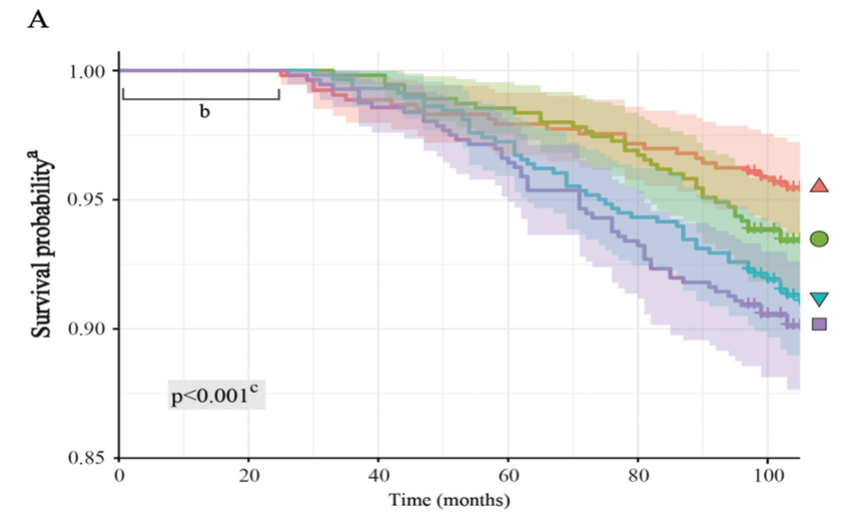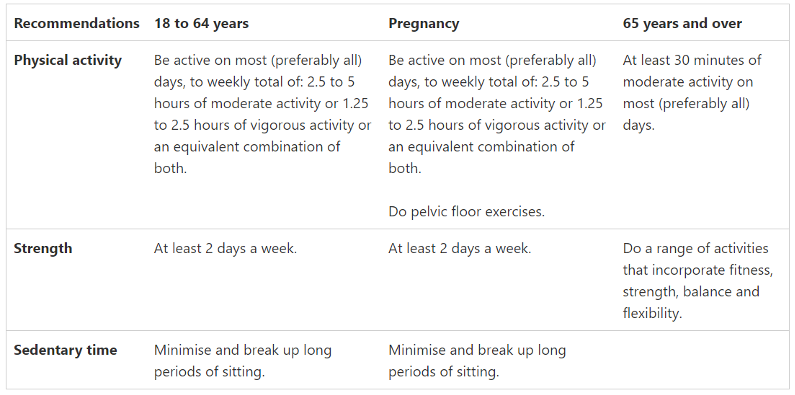Being unfit or having excess fat- which one is worse?
In todays health and wellness landscape, a prevalent concept being discussed is known as the “obesity paradox.” What does this term entail, you might wonder? The obesity paradox questions the conventional belief that a higher BMI automatically leads to an elevated risk of chronic diseases and, ultimately, mortality. This conventional wisdom has been widely embraced for a considerable period.
Our 4th year Clinical Exercise Physiology student, Sarah Pike, discusses this concept.

The debate between “Fitness vs. Fatness” may not be a familiar topic to many, yet it represents a promising and burgeoning field in the realm of healthcare. By providing a glimpse into the remarkable influence that fitness can exert over fatness, the intention is to challenge preconceived notions about the impact of excess weight.
Firstly, we need to define fitness and fatness.
Fitness is a multifaceted physiological make-up a person may have. Types of fitness and their assessments include:
– Aerobic fitness how much oxygen your body can use?
– Exercise capacity how far/ long can you go?
– Neuromuscular fitness how strong/ powerful are you?
– Body composition bone density/ waist circumference/ BMI
– Physiological/ metabolic Blood pressure/ heart function/ lung function/ blood sugars
Fatness refers to the amount of EXCESS adipose tissue (fat is not scary, we need it to live). Fatness can be measured by directly by
1. Air/ water displacement
2. DEXA
3. Skinfolds
4. Waist circumference
5. Bioelectrical impedance
6. CT/ MRI scans (regional assessment)
And be measured INDIRECTLY through BMI- measure of weight relative to height, explains only around 70% of body comp.
The debate surrounding Fitness vs Fatness is highly significant, particularly in today’s era dominated by social media and the obsession of body image, excessive exercise, and dieting. It plays a crucial role in reshaping societal perception of what constitutes a “healthy” body type. Our overall health is influenced by both physical and body composition.
There was an amazing study conducted that aimed to identify the clustering patterns of physical fitness and body fat indicators of older adults to determine if these identified clustered patterns were associated with a higher likelihood of morality. Inevitably, the concept fitness vs fatness emerged, examining whether body fat % and BMI or physical fitness levels had a stronger relationship to all cause mortality – is it better to be fat and fit or low weight and unfit?
Over the course of these older adults lives, this is what they found.


What this graph depicts is the relationship between survival probability amongst four groups (low fat-fit, medium fat-fit, high fat- unfit and low fat-unfit) This graph considered ALL factors of the study including, BMI and body fat % amongst the obese, overweight and the lean groups. The highest probability of all-cause mortality for older adults was the purple square here which was the LOW fat- unfit group.
So what does this mean? This means that when considering being fit, regardless of fatness, you are at a significant advantage in comparison to not being fit.
But wait, there’s more…
The most amazing part of this study was this graph below. In the participants testing prior to the study a lifestyle questionnaire was administered. The questionnaire included smoking habits, sedentary behaviours, time spend walking, time spent being active, medications, level of education, and alcohol consumption. Based on their answers pre and post study, this graph was created. What they found is called a hazard ratio, which shows us that there are direct links between lifestyle factors and morality.
So what does all of this mean?
1) Physical fitness plays a crucial role in longevity REGARDLESS of fatness
2) Lifestyle factors are a better predictor of morality than being overweight
3) There are direct links between fatness and poor lifestyle factors
4) The gold standard to living a healthier and longer life means to maintain physical fitness and decrease modifiable risk factors
What can you do?
As they say, “knowledge is power”, understanding lifestyle risk factors and implementing strategies and sustainable habits into you life will give you the best chance at a long- lasting life.
Modifiable risk factors
– high cholesterol
– high blood pressure
– smoking
– diabetes
– obesity
– physical inactivity
– poor nutrition.
Australian physical activity guidelines
Sarah Pike
4th year Clinical Exercise Physiology student
University of Queensland
References
Gruberg L , Weissman NJ, Waksman R, et al. The impact of obesity on the short-term and long-term outcomes after percutaneous coronary intervention: the obesity paradox? J Am Coll Cardiol. 2002;39:578–584. doi:10.1016/s0735-1097(01)01802-2
Navarrete-Villanueva D, Gómez-Cabello A, Gómez-Bruton A, Gesteiro E, Rodríguez-Gómez I, Pérez-Gómez J, Villa-Vicente JG, Espino-Toron L, Gusi N, González-Gross M, Ara I, Vicente-Rodríguez G, Casajús JA. Fitness vs Fatness as Determinants of Survival in Noninstitutionalized Older Adults: The EXERNET Multicenter Study. J Gerontol A Biol Sci Med Sci. 2022 May 5;77(5):1079-1087. doi: 10.1093/gerona/glab179. PMID: 34153109.
Sui X, LaMonte MJ, Laditka JN, et al. Cardiorespiratory fitness and adiposity as mortality predictors in older adults. JAMA. 2007;298:2507– 2516. doi:10.1001/jama.298.21.2507
McAuley PA, Keteyian SJ, Brawner CA, et al. Exercise capacity and the obesity paradox in heart failure: the FIT (Henry Ford Exercise Testing) Project. Mayo Clin Proc. 2018;93:701–708. doi:10.1016/j.mayocp.2018.01.026
Yerrakalva D, Mullis R, Mant J. The associations of “fatness,” “fitness,” and physical activity with all-cause mortality in older adults: a systematic review. Obesity (Silver Spring). 2015;23:1944–1956. doi:10.1002/oby.21181
https://www.health.gov.au/topics/physical-activity-and-exercise/physical-activity-and-exercise-guidelines-for-all-australians
https://www.aihw.gov.au/reports-data/behaviours-risk-factors/risk-factors/overview
